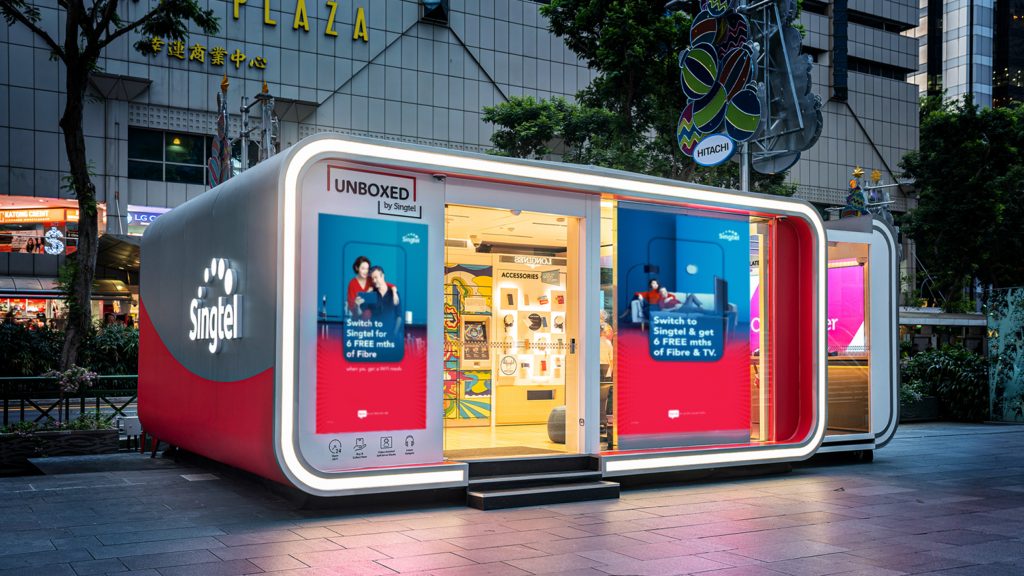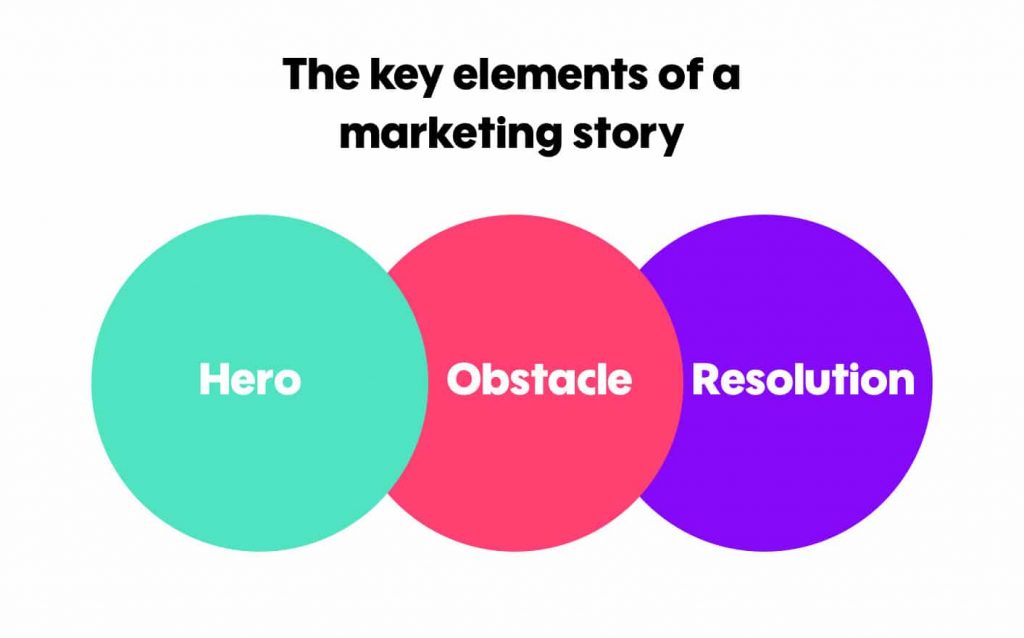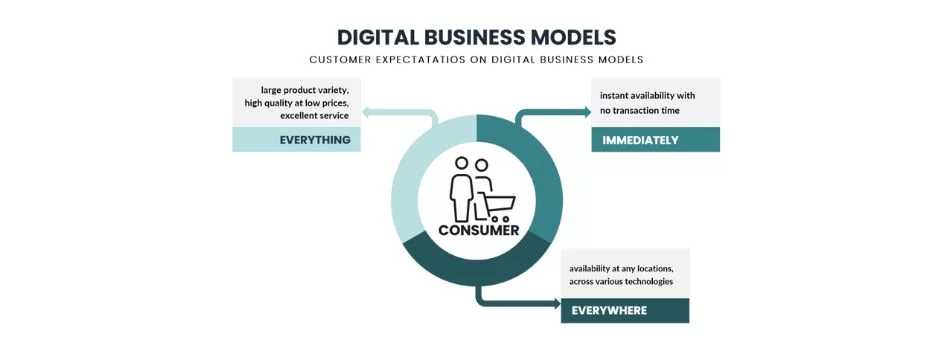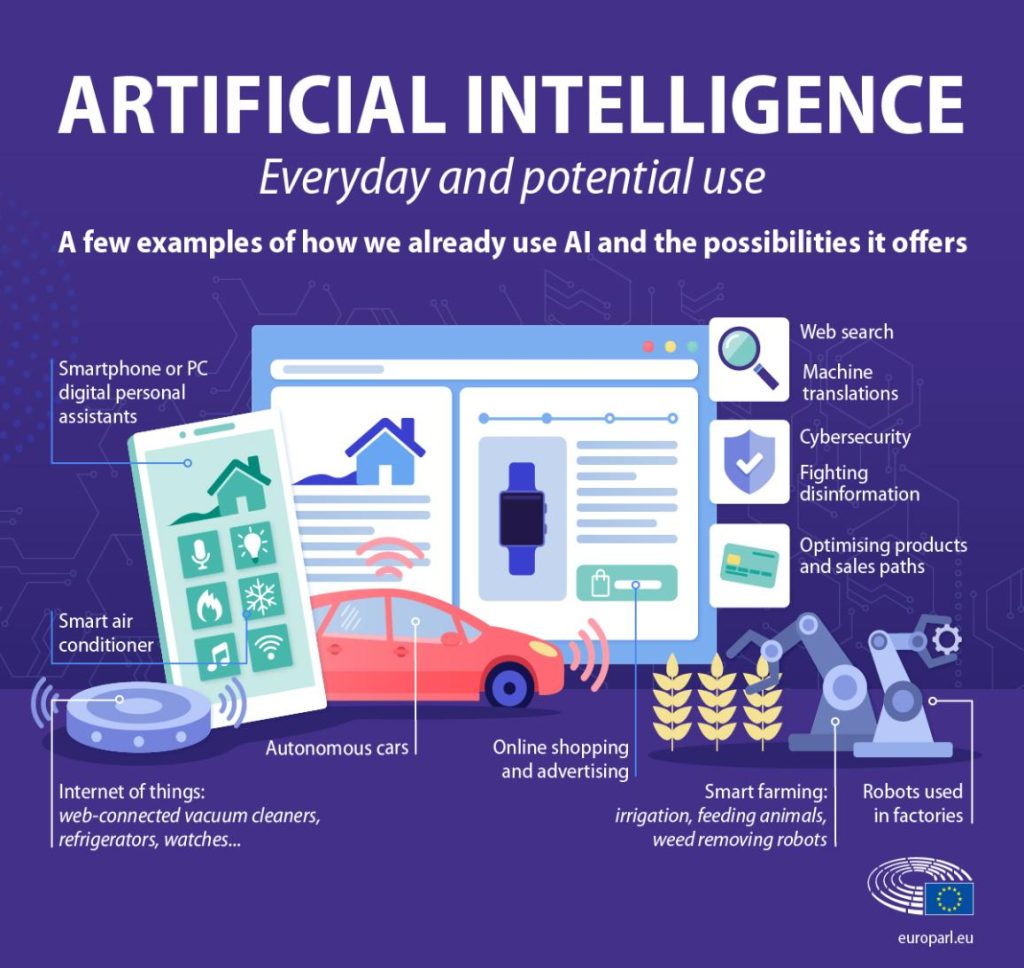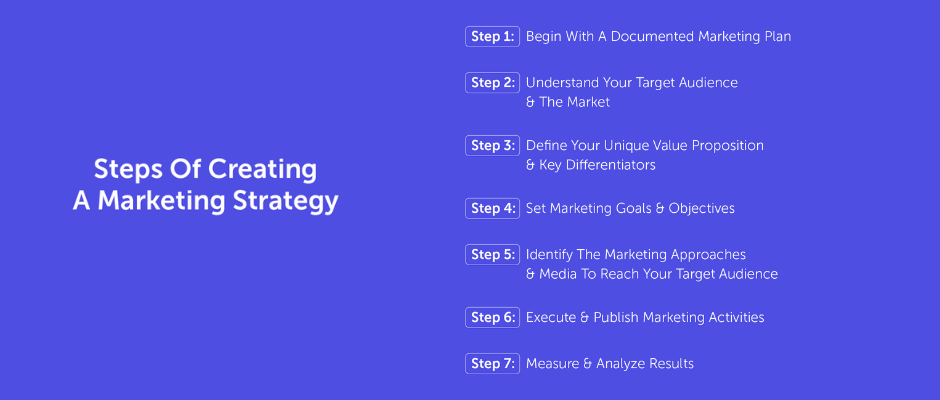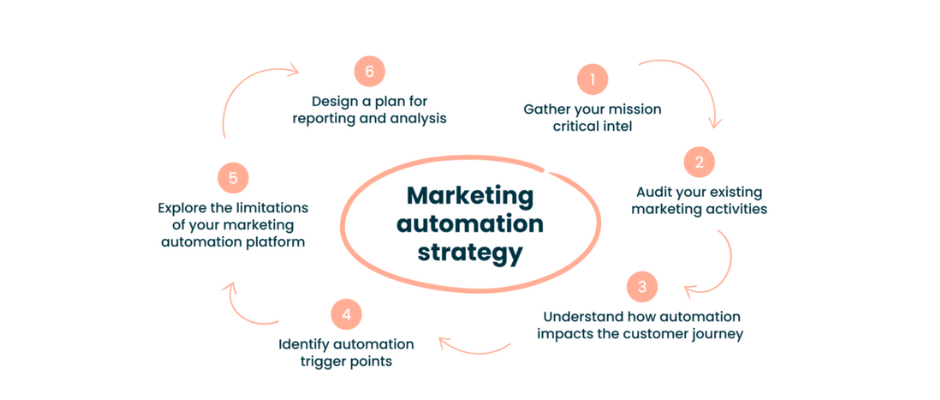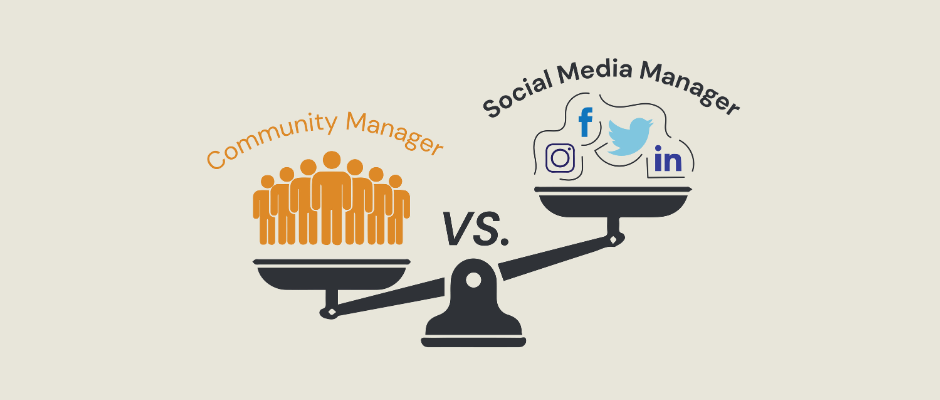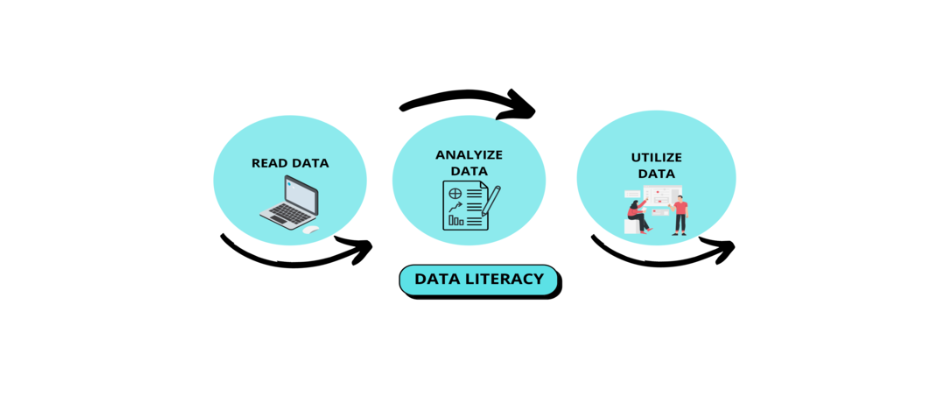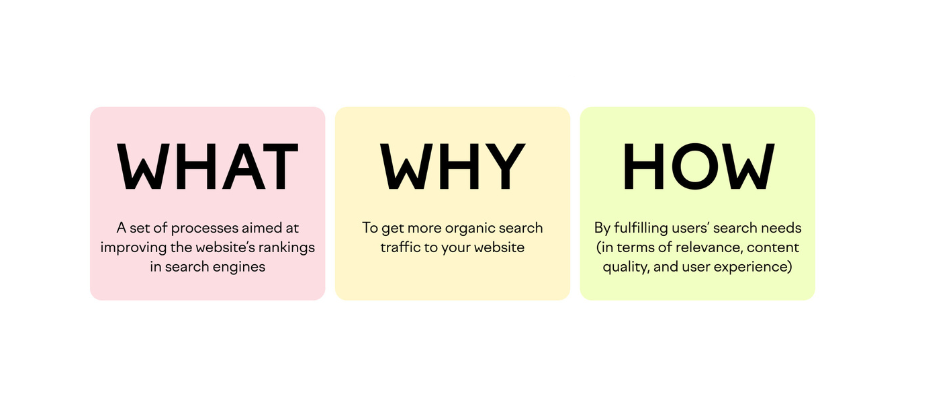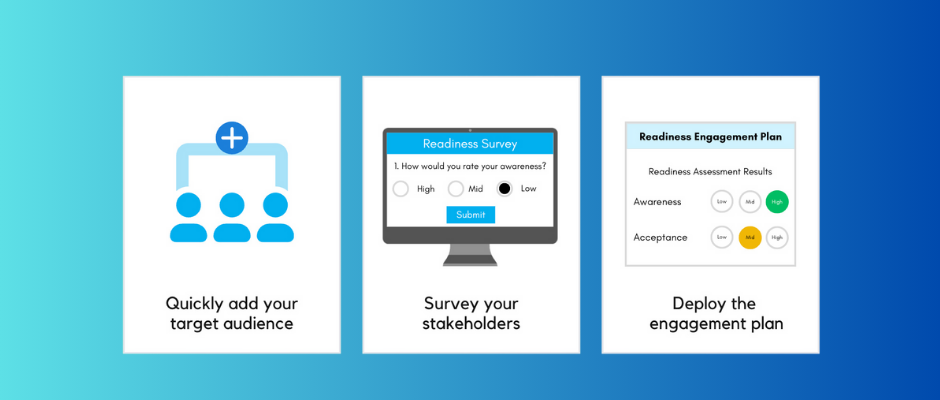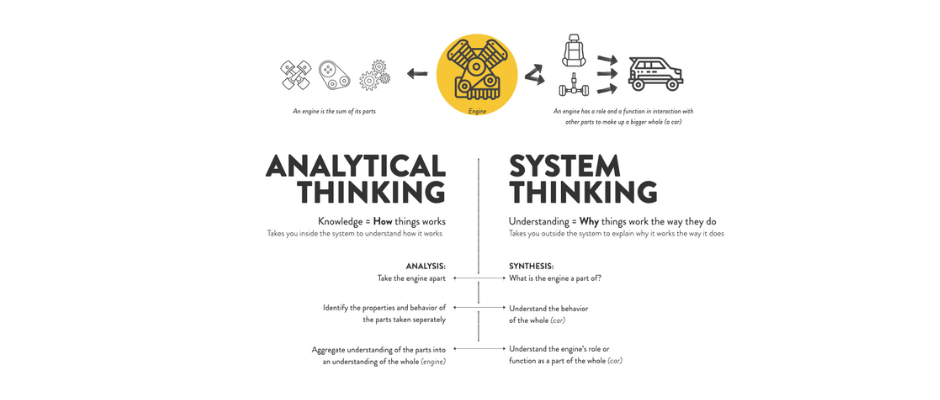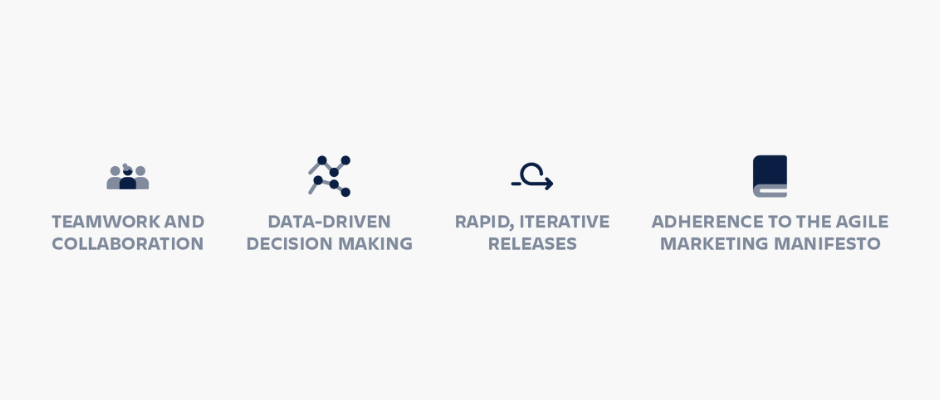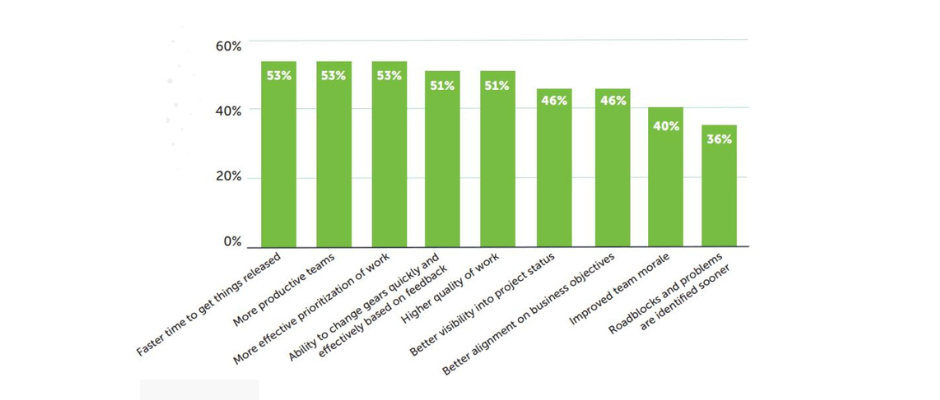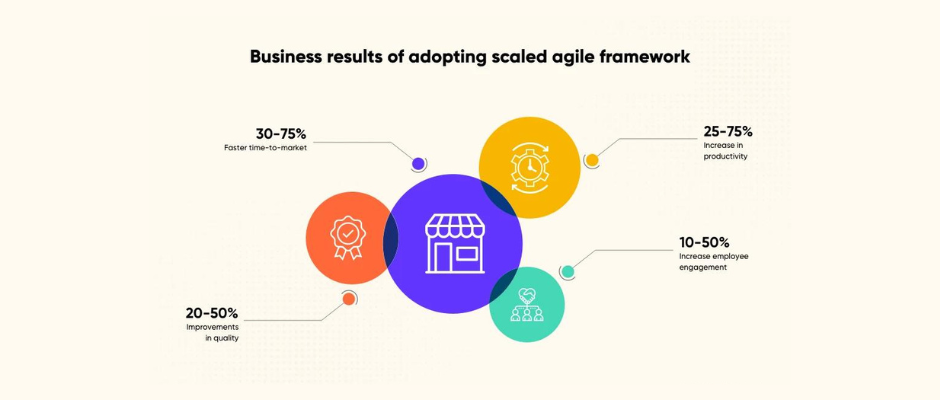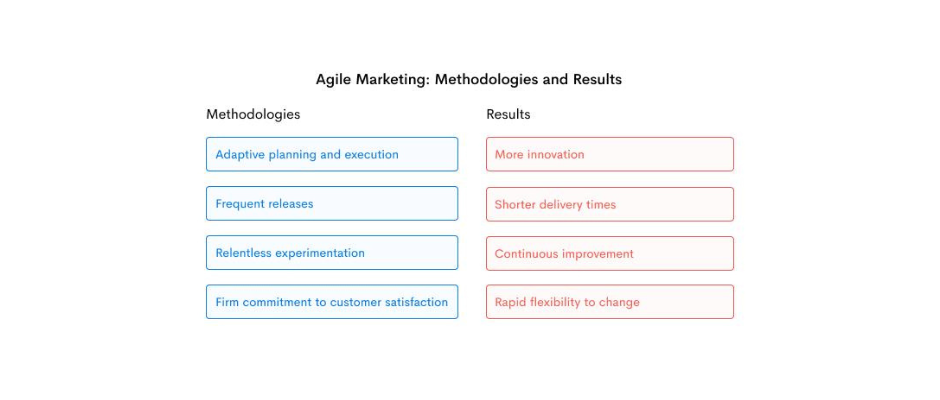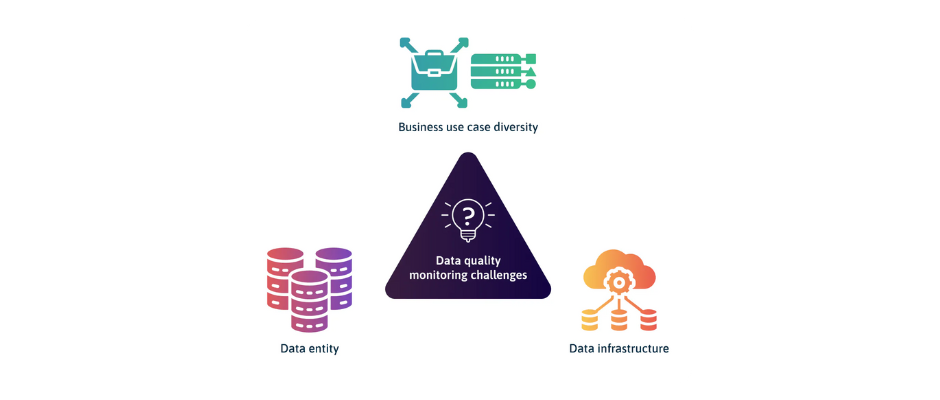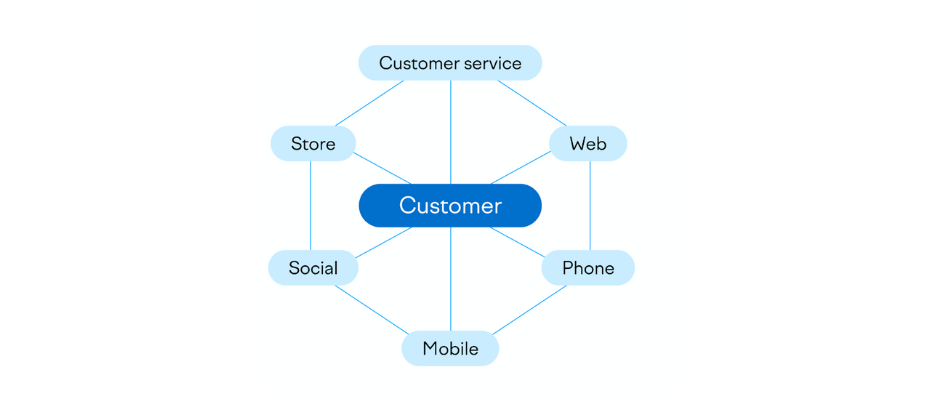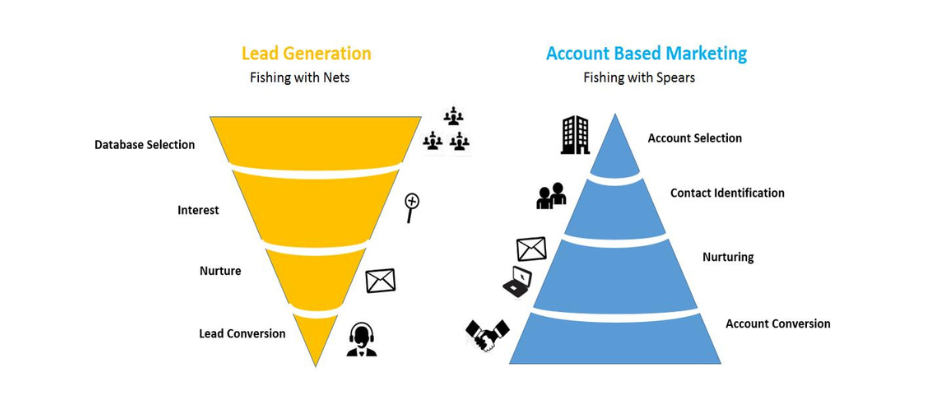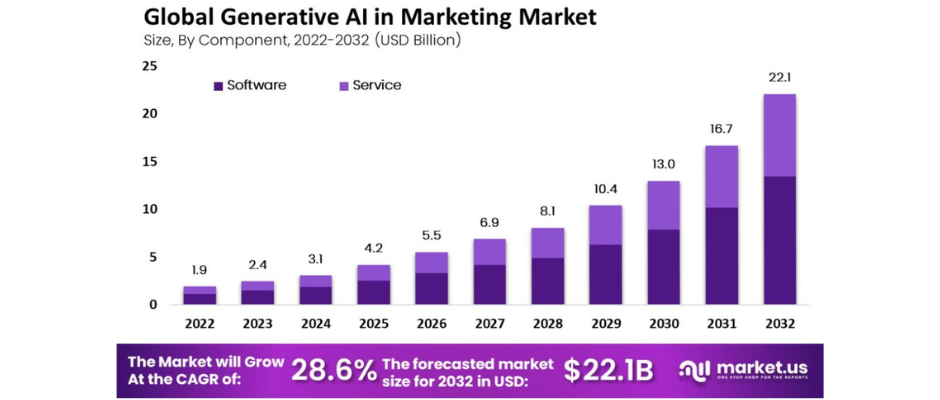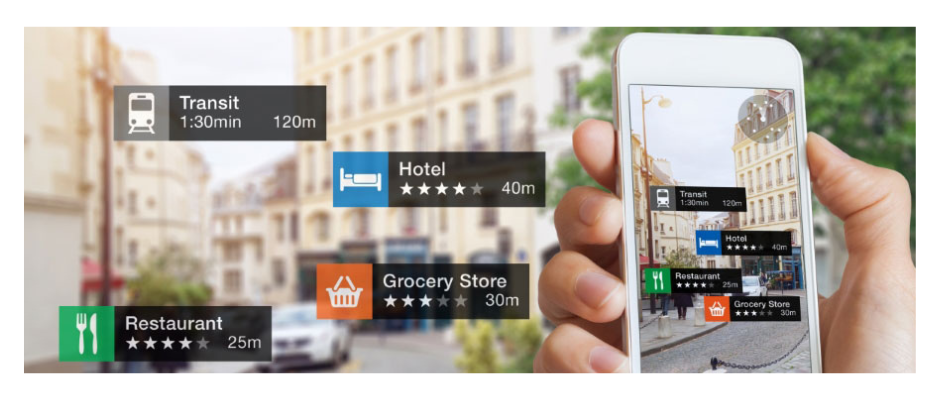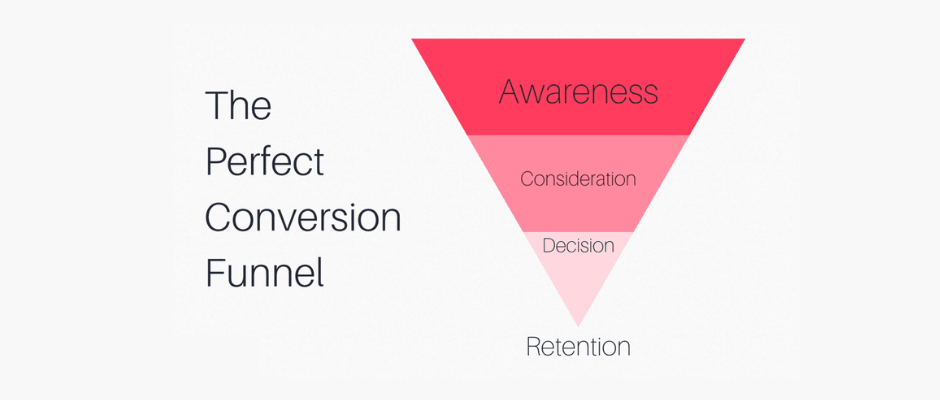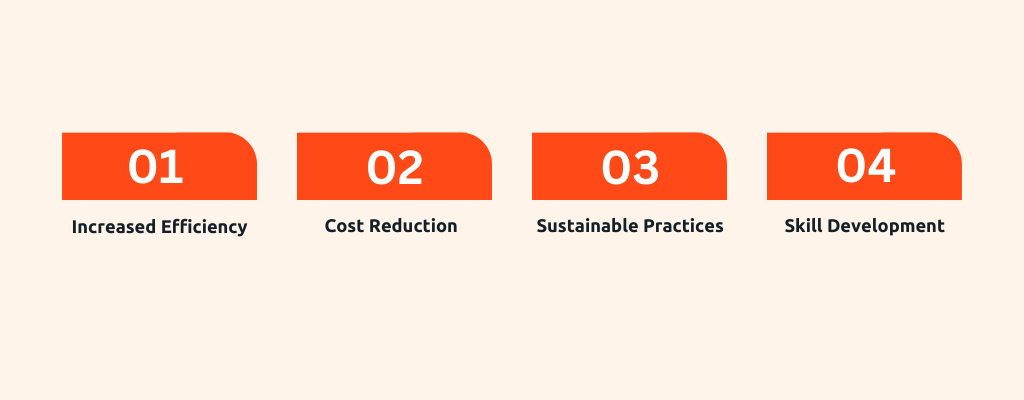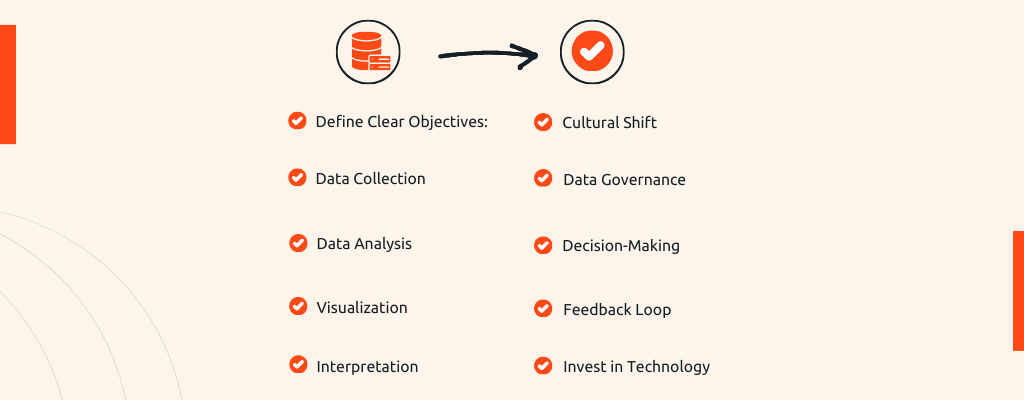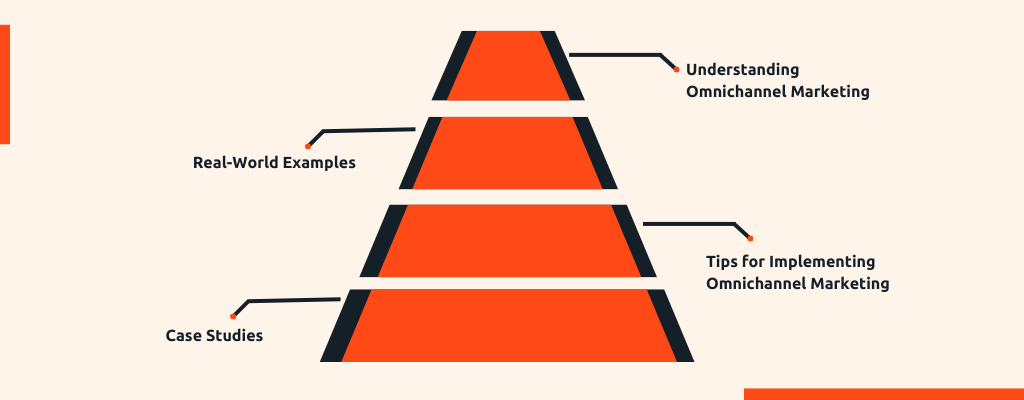Top 10 Data-Driven Lead Conversion Trends to Watch in 2024
Table of Contents
Are you curious about the secret to effective lead conversion in 2024? It’s not just about the numbers; It’s attracting the right kind of leads – those who are genuinely interested and will most likely become not just one-time buyers but loyal customers. Today, customers have endless options and are constantly informed. It’s crucial to stand out by being genuinely customer-focused.
Fortunately, there’s no need to rely on guesswork to enhance your conversion rates. We’ve taken on the task of researching and gathering the key lead conversion trends for 2024.
✅ Trend #1. Artificial Intelligence and Machine Learning
In 2024, Artificial Intelligence (AI) and Machine Learning (ML) are changing how we turn leads into customers. They’re making it much easier and more effective to figure it out and focus on potential customers. AI and ML can process big amounts of data quickly and accurately, revealing patterns and insights humans might miss. This means businesses can identify which leads are most promising and focus their efforts more effectively. These technologies continuously learn and evolve based on new data, fine-tuning how leads are scored and prioritized. This ensures that businesses are always working with the most current and relevant information.
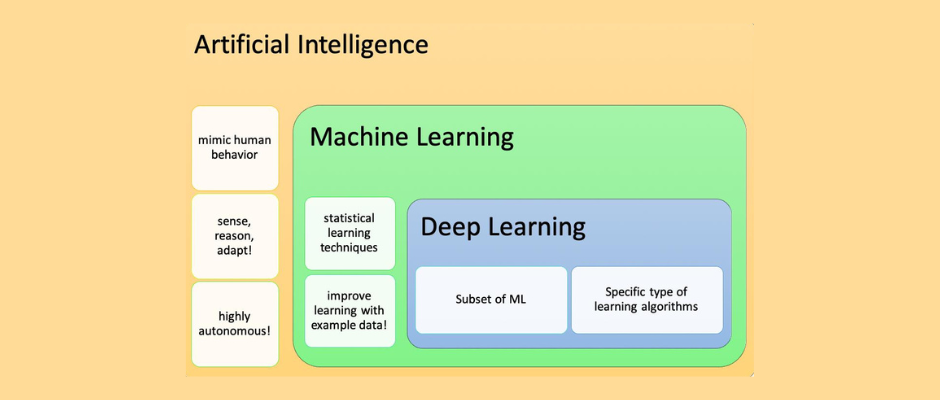
In practice, businesses are leveraging AI and ML in various innovative ways. Here are a few examples:
- Predictive Analytics: Businesses use AI to forecast which leads are more likely to convert based on historical data patterns.
- Personalization at Scale: AI and ML allow for tailored marketing efforts for each potential customer based on their unique data and behaviors. According to IBM, 85% of businesses believe that AI will improve how they engage with customers.
- Automated Lead Nurturing: These technologies can automate significant parts of the lead nurturing process, like sending personalized emails aligned with each lead’s preferences.
- Real-Time Strategy Adjustments: ML algorithms can modify marketing strategies in real-time, optimizing them based on how leads respond.
✅ Trend #2. Personalized customer experiences
Common marketing messages are no longer enough. People want experiences that seem made just for them. In fact, 43% of online shoppers worldwide are ready to share their personal data for the privilege of receiving tailored marketing.
The role of personalization in boosting conversion rates is clear. Customers are captivated by tailored experiences, which help them feel understood and valued. This straightforward strategy leads customers down the conversion path by grabbing their attention and fostering a deeper, more meaningful connection with the brand.

But how can you make your marketing personal? Here are some ways:
- Use your data: Your proper CRM and website analytics are full of insights. Use this to group your audience. Then, make campaigns that speak to each group.
- Personalize in real-time: Use tools that change website content and offers as customers browse. Show items they’ve looked at or offer discounts based on their actions.
- AI recommendations: Make content or product recommendations with AI, just like Netflix and Amazon do. Users are kept intrigued and encouraged to purchase as a result.
- Automated messages and chatbots: Use automated emails for actions like cart abandonment. AI chatbots can talk to visitors on your site, offering help that’s tailored to them.
- Test and tweak: Keep testing different content and offers. Check what functions best for every group. Adapt your strategy in light of what you discover.
✅ Trend #3: Omnichannel Lead Nurturing
These days, customers anticipate a seamless interaction at every touchpoint. 59% of consumers, according to the Wunderman Thompson 2021 report, desire brands to offer a seamless communication experience across various channels. Email, social networking, and even physical stores fall under this category.
Today, customers interact with brands through multiple platforms; an omnichannel strategy is essential for effective lead conversion. The key to successful omnichannel lead nurturing lies in its ability to offer a unified experience. It is essential to ensure that the experience at each touchpoint is continuous and consistent. Maintaining consistency strengthens your brand’s message and fosters familiarity and trust with potential customers.
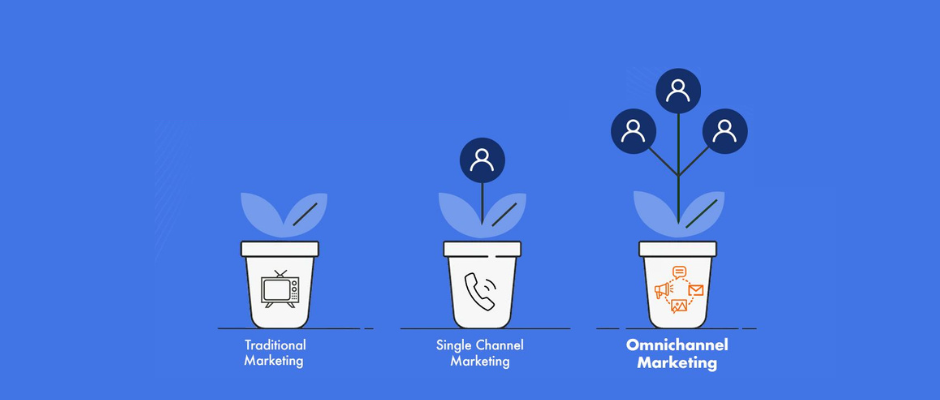
But how do you manage this? Here are some tips:
- Understand the customer journey: Find out what actions your leads take. This can happen when someone visits your store, finds you on social media, or receives an email. Find out where you might be losing out on opportunities to interact.
- Connect your data and platforms: Ensure that your email platform, social media accounts, and CRM are all integrated. This enables you to customize their experience and monitor activity across channels. Utilizing a tool like Sites & More CRM can streamline this process, enabling you to monitor customer interactions across various channels and customize their journey accordingly. This integrated approach increases the effectiveness of your lead nurturing campaigns while also improving the consumer experience.
- Personalize at every step: Utilize data-driven insights to personalize your offers and messaging. This may be predicated on prior exchanges, website visits, birthdays, or even physical locations.
- Keep your brand consistent: Have the same voice, look, and message across all channels. This builds trust and a strong brand image.
- Use automation tools: These tools can help automate personalized emails and other interactions. They make your omnichannel strategy smoother.
- Track and improve: Use data to see what’s working and what isn’t. Look at click-through rates and conversions. Then, adjust your strategy to make it better.
✅ Trend #4: Automation in lead management
Automation tools are revolutionizing how businesses manage and nurture leads, streamlining processes that were once time-consuming and prone to human error. Automating lead management aims to make the lead conversion process as successful as possible.
The role of automation in lead management is all about leveraging technology to handle routine and repetitive tasks. This includes everything from capturing lead data to scoring leads based on their engagement and behavior. By automating these processes, businesses free up valuable time and resources, allowing them to focus on strategy and engagement rather than getting bogged down in operational details.
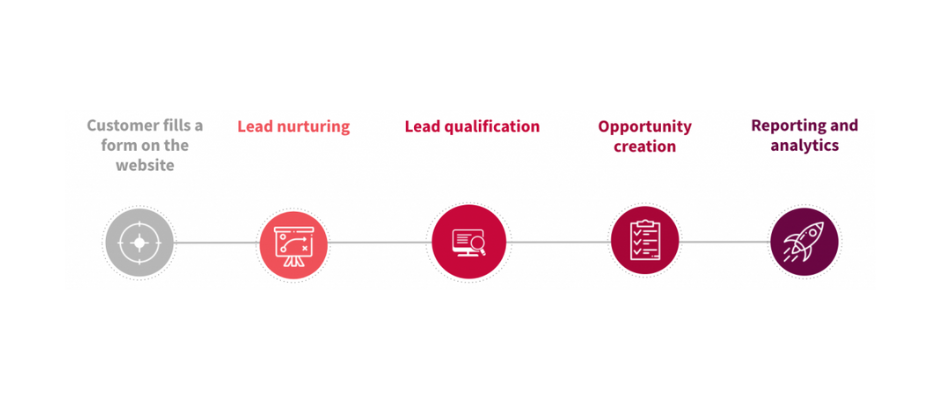
How does automation help convert leads? Here are some key points:
- Scoring and sorting leads: No more endless manual sorting. AI tools can look at data like website visits, and email clicks to score leads and decide who to contact first. This means you spend time on leads most likely to buy, helping your conversion rates.
- Personalizing emails for many: The days of generic emails are long gone. With email automation, you may send emails that change according to the individual habits of each recipient, much like what Sites & More provided. enables you to send emails that alter according to each user’s actions. Imagine a welcome email tailored to each lead’s interests, interspersed with recommendations for blogs and exclusive deals. This strategy generates more reactions and deeper connections, which increases sales.
- Chatbots and virtual assistants: Use AI chatbots to provide better customer service. They converse with internet users, respond to inquiries, and categorize leads. This allows leads to receive prompt assistance and offers your sales staff more time to close deals.
- Streamlining tasks and managing data: Forget manual data entry and messy spreadsheets. Automation tools link with your CRM and marketing tools, automatically syncing data and setting off actions. This reduces boring tasks, makes data more accurate, and smooths out lead management.
- Predicting and analyzing: Find out what the potential next steps for leads are. Analytics systems predict lead behavior, identify dangers, and recommend tailored actions based on trends in the data. This enables you to address problems before they arise, improve lead nurturing at every stage, and adjust your efforts.
✅ Trend #5: Video marketing for engagement
As we look ahead to 2024, video marketing stands out as a key trend in lead conversion. Its growing popularity is undeniable, with video content increasingly becoming the preferred medium for engaging potential leads. In fact, 59% of Gen Z, currently recognized as the largest generation globally, said that they often utilize short-form videos to discover things they then watch longer versions of.
Videos offer a dynamic and compelling way to capture attention, convey messages, and build connections. It combines visual and auditory elements to tell stories, explain complex ideas, and actively showcase products or services. With the rise of social media platforms prioritizing video content and the increasing consumer preference for video over text, incorporating video into your marketing strategy is more important than ever.

Here’s how to use video to boost lead conversion:
- Focus on storytelling: Don’t just try to sell. Share stories that hit home with your audience. Show how your product or service can solve their problems. This builds trust and a stronger bond, leading to more sales.
- Make videos short but strong: People’s attention is limited. Keep your videos under 2-3 minutes. Use striking visuals and clear calls to action to keep viewers interested and move them forward.
- Use testimonials and case studies: Show real customer stories and successes. This proves your worth and helps potential customers see how you’ve helped others like them.
- Optimize for mobile: Make sure your videos work well on mobile devices. They should load fast and look good on phones and tablets.
- Use video everywhere: Don’t just put videos on your site. Include them in emails, social media, and webinars. This grabs attention, teaches your audience, and leads them to buy.
- Track your results: Use analytics to see how your videos are doing. Look at views, engagement, and sales. This helps you see what works and improves your video strategy.
✅ Trend #6: Voice search optimization
Optimizing for voice search has become essential to lead generation and conversion campaigns. With the popularity of speech-activated gadgets like Google Assistant, Alexa, and Siri, businesses that want to stay competitive must now prioritize voice search optimization.
Questions are usually longer, more conversational, and structured like inquiries when asked over the phone. Research showed that 71% of consumers prefer using voice search over typing when looking for information online. This shift presents a unique set of challenges and opportunities for businesses. Content that ranks for voice search often provides direct, concise answers, a contrast to traditional text-based searches.

Here’s how to make your site a favorite for voice searches:
- Know the question behind the search: Voice searches are often specific and conversational. Figure out what people really want to know and shape your content to match. For instance, “best CRM for small businesses” means something different from “CRM software features.”
- Use a friendly tone: Skip the formal language. Write like you’re talking to a friend. Use everyday words, questions, and full sentences. This makes your content fit better with voice searches.
- Aim for the top spot in search results: Try to get your content in the “answer box” at the top of search results. Write clear, direct summaries that answer people’s questions.
- Focus on local info: Voice searches are often local, like “find restaurants near me.” Ensure your site is set up for local searches with correct contact info and listings in local directories.
- Think mobile-first: Most voice searches are on mobile. Ensure your site works well on phones, with quick loading times and an easy-to-use layout.
- Use structured data: Help search engines understand your content with schema markup. This boosts your chances of showing up in voice searches.
✅ Trend #7: Effective Decision Making
Using analytics to guide strategy is crucial at a time when data is widely available. The transition in lead conversion towards a data-centric strategy highlights the significance of actionable insights in developing successful marketing strategies. Decision-making based on data improves personalization, targeting accuracy, and overall marketing effectiveness. With solid data, companies may explore consumer behaviors, preferences, and new trends in great detail, enabling them to make well-informed and strategic decisions on lead conversion procedures.
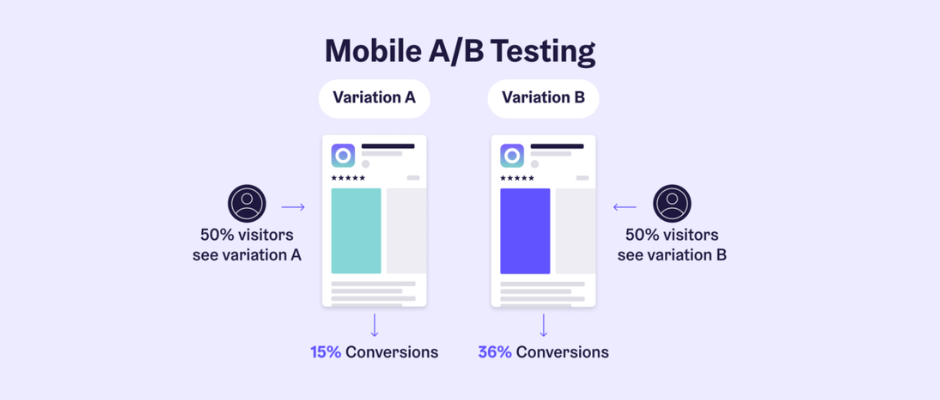
How do you make data work for you? Here are some tips:
- Choose the right tools: Get analytics tools that offer detailed insights. Look for features like deep user behavior analysis and A/B testing like those offered by Sites & More. You can create two versions of a funnel and test them simultaneously; you can gain insights into what truly resonates with your audience.
- Focus on key metrics: Don’t drown in data. Pick metrics that match your goals. Watch things like conversion rates, bounce rates, lead quality, and customer lifetime value. These show what works.
- Look past surface numbers: Likes and shares are good but don’t show the whole picture. Focus on deeper metrics like time on page, click-through rates, and form fills.
- Segment and tailor: Not all leads are the same. Use data to group your audience by age, interests, and actions. This lets you customize your messages and offers, which can boost conversions.
- Keep testing and improving: Data changes. Keep trying new things and see what works best. Use what you learn to make your funnel better.
- Make data a team effort: Data shouldn’t just be for analysts. Get everyone in your company to use data. Share insights, use data in marketing, and let everyone decide based on data.
✅ Trend #8: Interactive content
This trend includes a range of interesting forms, such as surveys, quizzes, and other interactive tools, which have shown to be incredibly effective in generating and retaining leads. Users can have conversations with interactive content, which enhances the user experience and makes it more intimate. Not only does this kind of material make users more engaged, but it also helps them feel more connected to the company.

How do you incorporate interactive elements in your marketing? Here are some ideas:
- Quizzes and assessments: People love learning about themselves. Make quizzes that determine find their needs, suggest personalized options, and show off your know-how. Utilize tools like Sites & More quizzes and surveys builder to design quizzes, for example, “What’s Your Marketing Style?” that lead to custom content and product suggestions.
- Tools to play with products and numbers: Let people experiment with your products or calculate their return on investment. This kind of interaction gets people involved and moves them closer to buying.
- Polls and surveys: Start conversations and learn what people think. Use polls and surveys to find out what your audience likes and what new features they want, and tailor your content to them. This active involvement builds trust and a stronger bond with your brand.
- Make it a game: Add a bit of competition. Use points, badges, and leaderboards to keep people interested and returning. This encourages them to interact more and nudges them towards what you want them to do.
- Storytelling and interactive videos: Get your audience lost in your story. Use videos where they choose what happens next. This personal touch makes a big impact and sticks with them.
- Learn from the data: Watch how people use your interactive content. See which quizzes are hit, their choices, and where they lose interest. Use this info to improve your content and turn more visitors into customers.
✅ Trend #9: Mobile-first approach
Around half of the world’s web traffic now comes from mobile devices. As of the first quarter of 2023, mobile devices (not including tablets) were responsible for about 58.33% of all global website traffic.
A key component of user engagement and lead conversion is mobile optimization. Because most internet users get their information while on the go, poorly designed websites and content can result in poor user experiences and drastically lower conversion rates. A mobile-first approach guarantees that your digital products and services meet the expectations of contemporary consumers in an efficient and meaningful way.
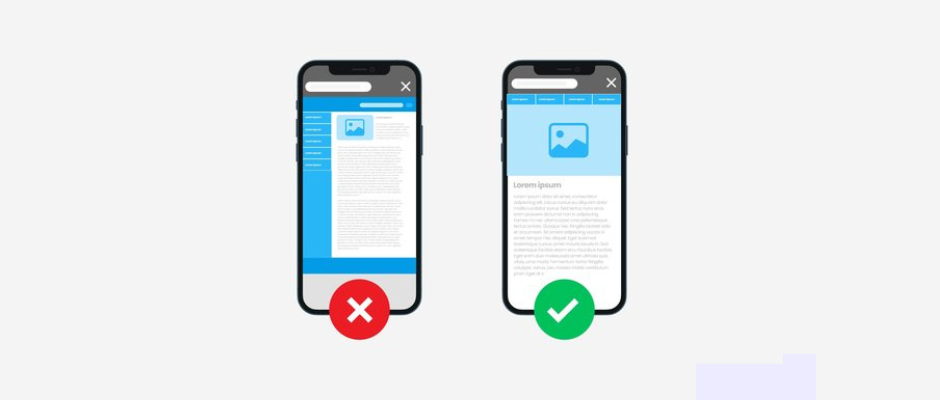
Here are some tips for winning over mobile users:
- Use responsive design: Make sure your site works well on any device. Your content should be easy to read, buttons easy to tap, and forms simple to fill out with one hand.
- Make your site fast: Mobile users don’t like to wait. Speed up your site. Use things like caching, smaller images, and AMP pages to make sure it loads quickly.
- Keep content short and sweet: Write short, clear content for mobile. Use lists, infographics, and short videos to make it more engaging.
- Catch their attention fast: Mobile users quickly lose interest. Draw them in with quick, helpful content. Offer tips and short videos, and personalize what they see based on their location or past visits.
- Simplify forms: Don’t make filling out forms on mobile a hassle. Use autofill, simple steps, and only ask for what you need.
- Use mobile’s special features: Take advantage of what mobiles can do. Target people nearby with local ads, add tap-to-call buttons, and give mobile-only deals.
- Keep testing and improving: The mobile world changes fast. Try different things to see what works best. Watch how people use your site and keep making it better.
✅ Trend #10: Enhanced privacy and data security
Consumers are becoming more aware and concerned about how their personal information is used and stored.
Gartner forecasts that by the end of 2024, data privacy laws will protect the personal information of three out of four people globally. Additionally, it’s expected that the average yearly budget for privacy in companies will surpass $2.5 million.
This heightened awareness has a direct impact on how consumers interact with brands. Businesses that fail to prioritize data privacy and security may face not only legal repercussions but also a loss of consumer trust, which can be detrimental to lead conversion rates.
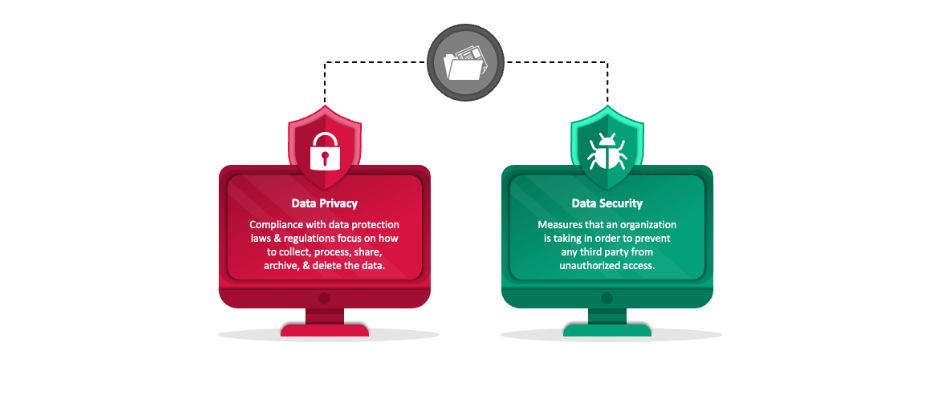
Here’s how to handle data with care:
- Be Transparent: Explain how you collect, use, and store user data. Be clear about your privacy policies and how users can opt-in or opt-out. This honesty builds trust and lets users make informed choices.
- Minimize Data Use: Only gather the data you need. Avoid collecting too much; and ensure you can safely get rid of data when it’s no longer needed.
- Boost Security: Protect user data with strong cybersecurity. Use encryption, check for vulnerabilities regularly, and control who can access data.
- Get Consent: Always get clear permission from users before using their data. Respect their choices and make it easy for them to change their preferences.
- Empower Users: Let users manage their own data. Give them access to their info, let them change it, and allow them to download or delete it. This gives them control and builds trust.
- Anonymize Data: Use data anonymization to keep getting insights while protecting privacy. This lets you tailor experiences and improve your marketing without risking sensitive info.
- Educate Everyone: Teach your team and customers about data privacy and security. Create a culture of data responsibility in your company and help users make smart choices about their online data.
- Stay Up-to-Date with Laws: Keep track of data privacy laws like GDPR and CCPA. Make sure your practices follow these rules. Staying ahead of legal changes builds trust.
Wrap Up!
Let’s take a look at some major trends that will be important for your company to know as we approach in 2024 and convert leads into business. Utilizing AI, tailored experiences, voice search, or other appropriate technologies and methods is crucial to successful marketing. They’re all excellent methods for improving the quality of your audience connections. This is where all-in-one platforms like Sites & More step in. You can build beautiful, mobile-friendly websites with no need for coding. It’s perfect for creating those personalized experiences that audiences love. Plus, with built-in AI tools, you can tailor your messaging, fine-tune your content, and get insights driven by fundamental real data. Make your content more engaging by adding quizzes and polls. These interactive features can boost how much your audience engages with your site and can help increase your conversion rates. Also, you can create seamless email campaigns that work with your website to help guide your leads through their journey. Are you ready to elevate your marketing game? Connect with the experts at Prime One Global! We specialize in driving success for businesses of all kinds. Let’s boost your business together. Contact us now!


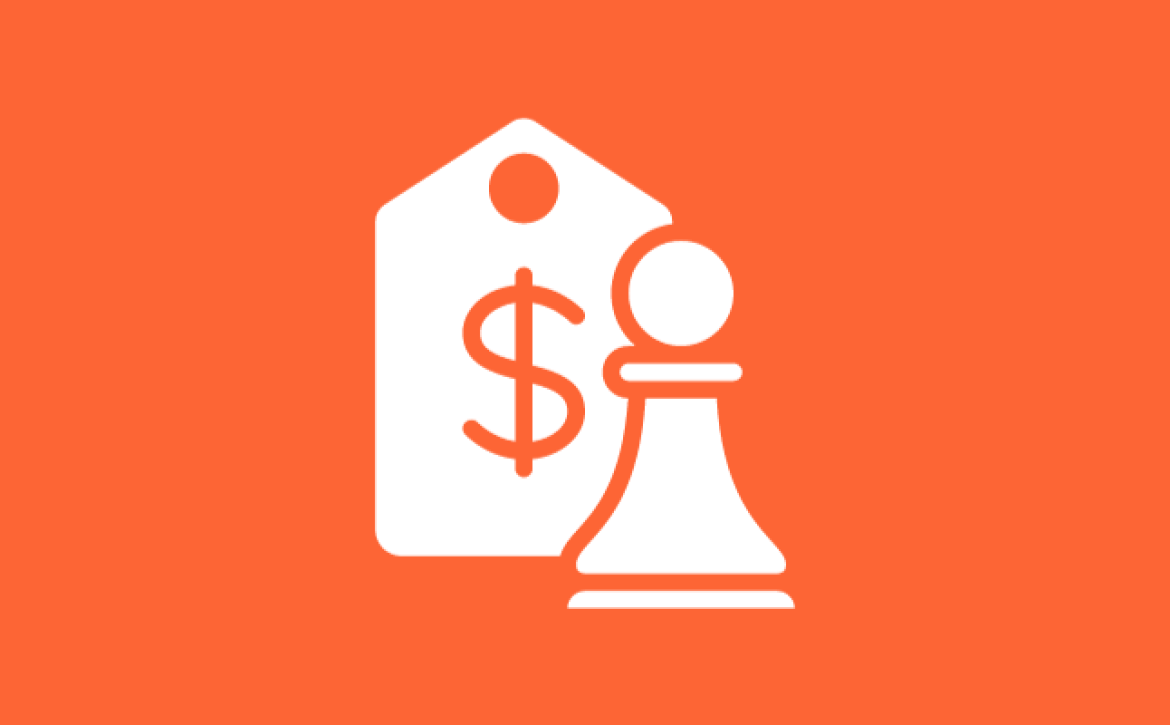
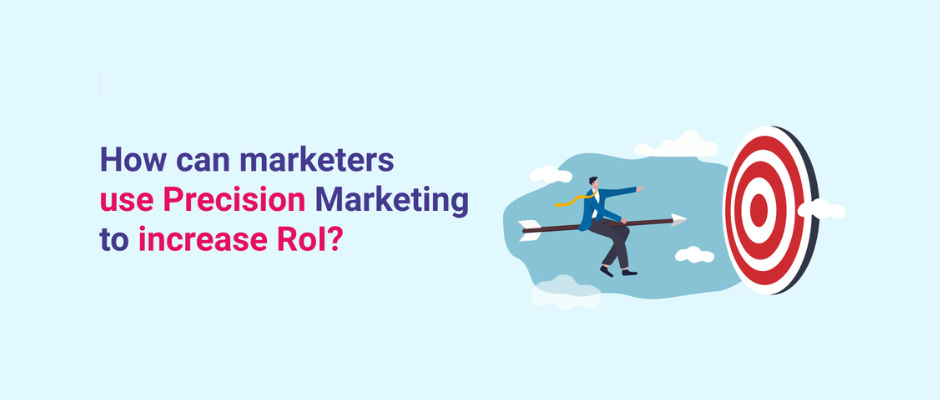
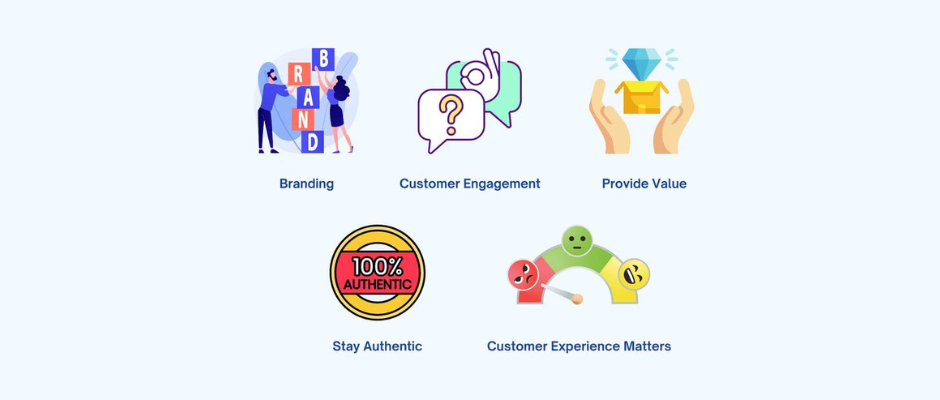





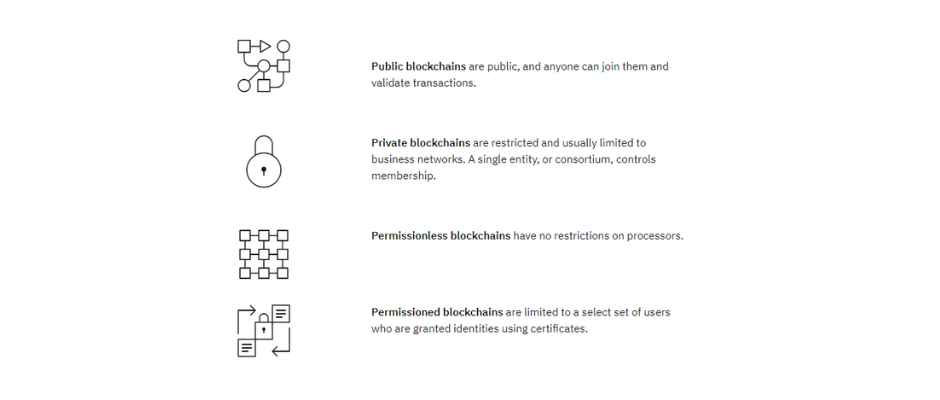



 Top 10 Experiential Marketing
Top 10 Experiential Marketing  Trends in 2024
Trends in 2024 Virtual and Hybrid
Virtual and Hybrid  Experiences
Experiences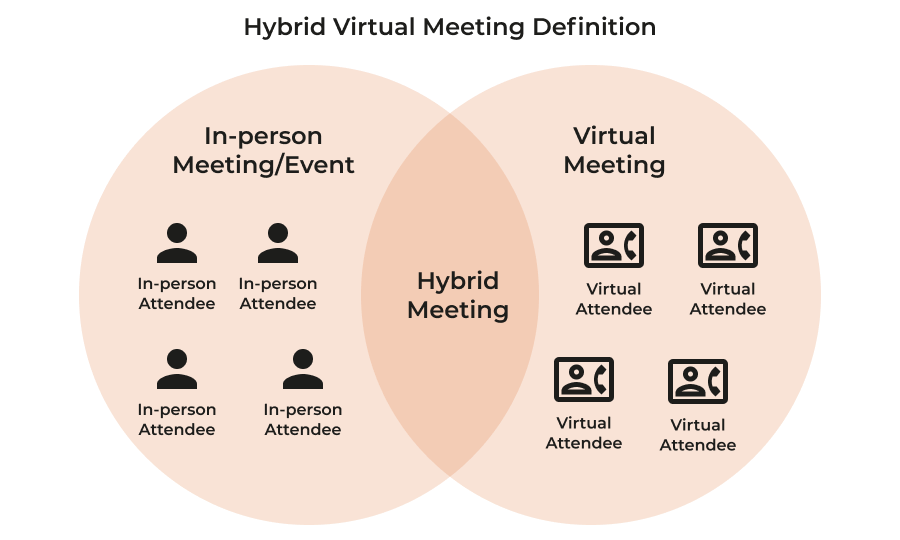
 Installations
Installations
